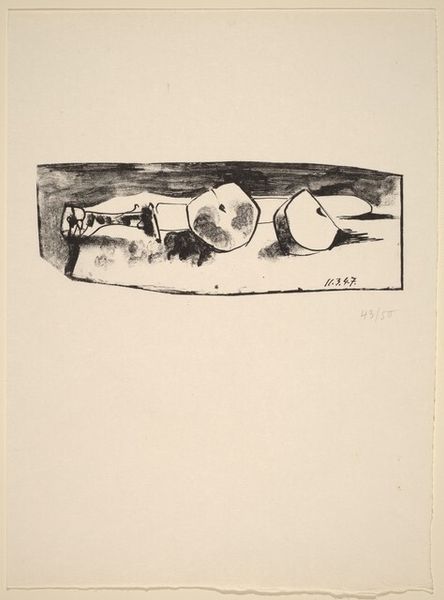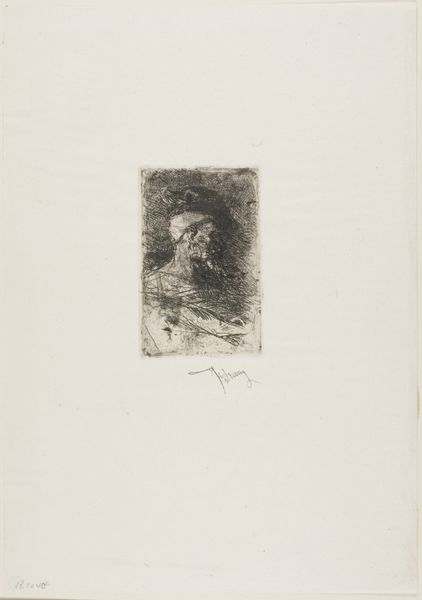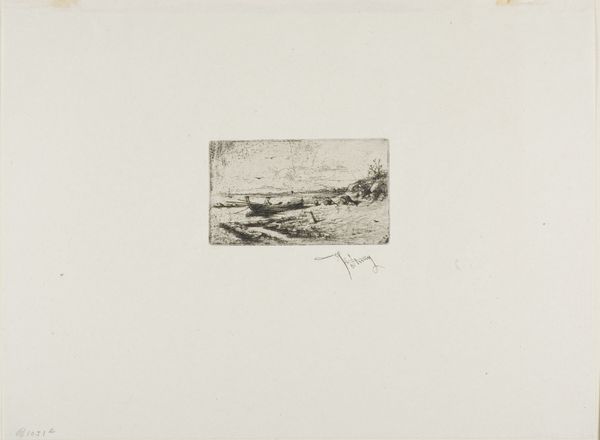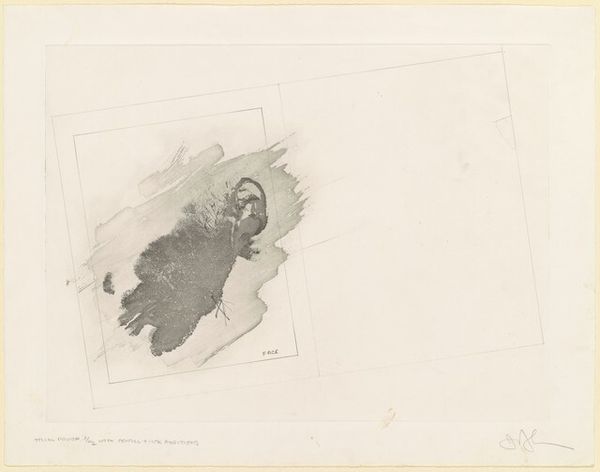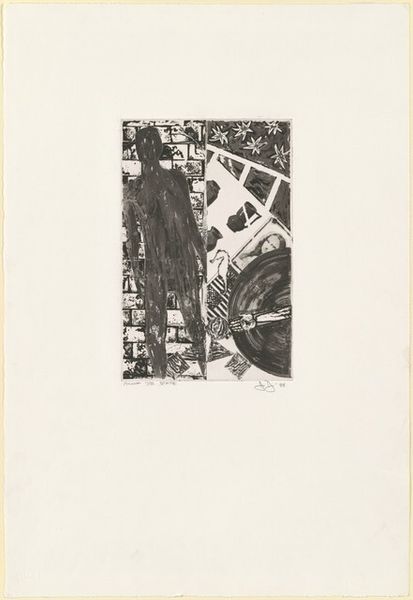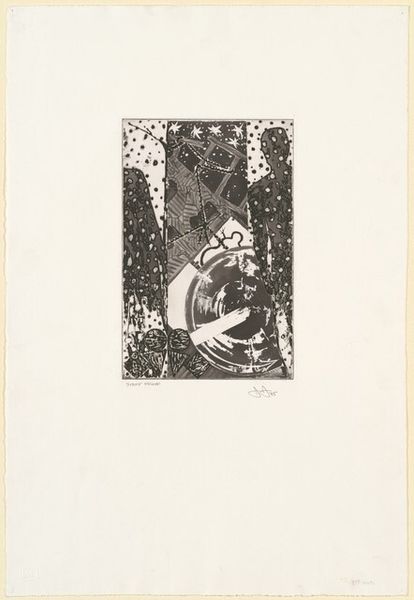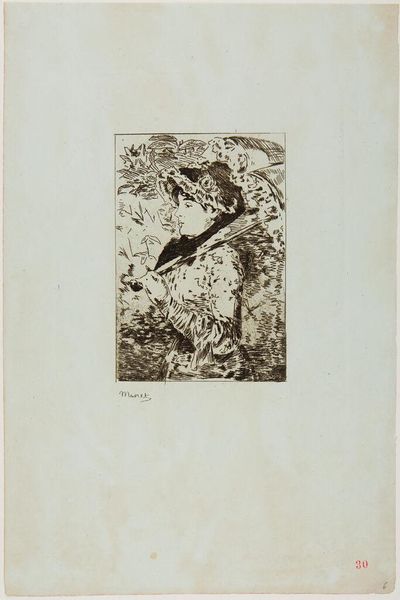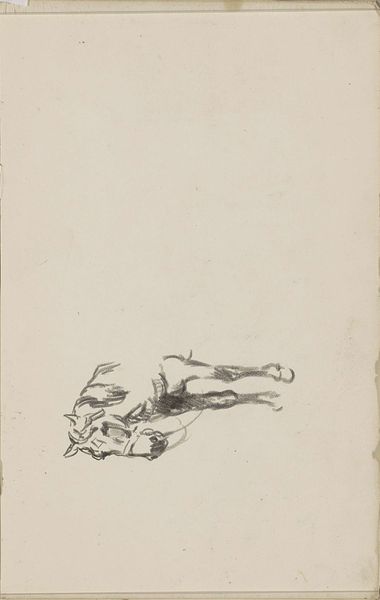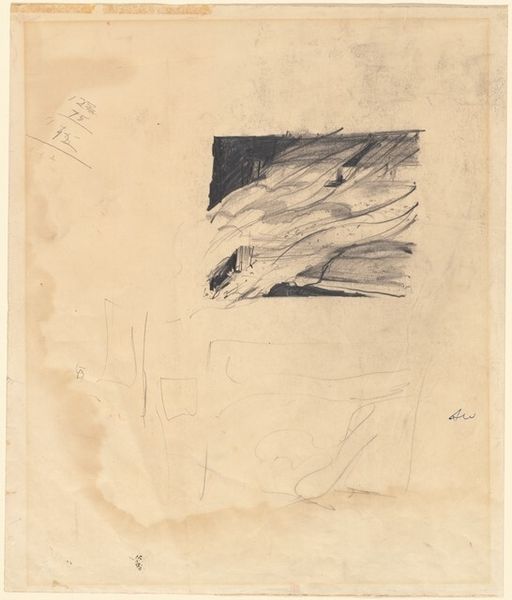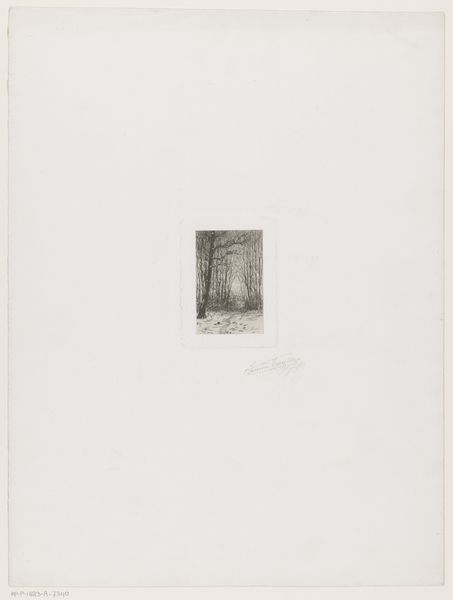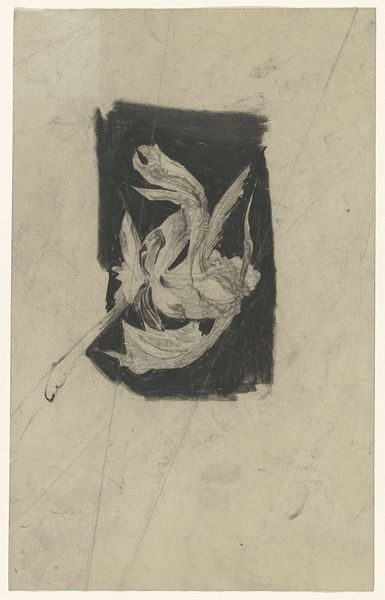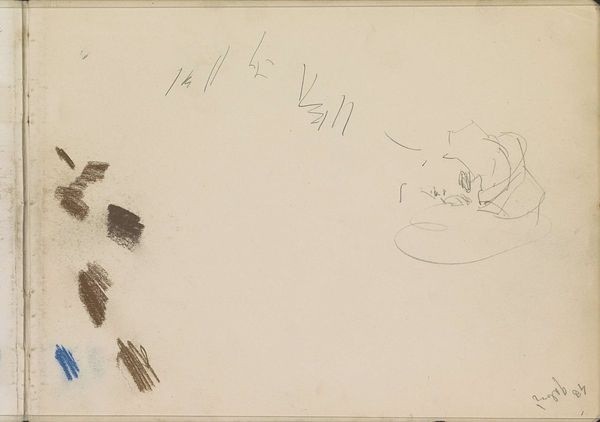
graphic-art, print, etching
#
graphic-art
#
cubism
# print
#
etching
Copyright: National Gallery of Art: CC0 1.0
Editor: Here we have Picasso's "La grappe de raisin," or "Bunch of Grapes," created in 1947. It’s an etching, a print. I find it quite minimalist, almost stark, with such delicate lines. How would you interpret such a seemingly simple piece? Curator: Simple, maybe, but deceptive! For me, it's a masterclass in capturing essence. It whispers of late summer light and simple abundance – things keenly felt in '47, post-war, wouldn't you think? Consider the context! Beyond the grapes, what do you observe about the use of positive and negative space? Editor: The grapes and vine are clearly defined, but there's so much empty space around them. It almost feels like the grapes are floating. Curator: Precisely! It draws your eye right in. And look closely. See how the shadow, though minimal, gives depth and groundedness? Even in its cubist styling it makes your mouth water a bit doesn't it? It’s the memory of flavour, of sun-warmed sweetness, reduced to its barest visual ingredients. Editor: It’s incredible how much he conveys with so little. Curator: Picasso had that rare gift, didn’t he? A conjurer with line and form. He coaxes so much emotion from what seems, at first glance, like the sparest of gestures. What do you think you’ll take away from looking at this today? Editor: I see that stripping things down to their essence can sometimes be more powerful than adding more detail. Curator: Exactly. It leaves space for the viewer, for us, to complete the picture, fill in the gaps with our own sensory experience, our own stories. That’s a sweet and deeply rewarding realization I hope.
Comments
No comments
Be the first to comment and join the conversation on the ultimate creative platform.
